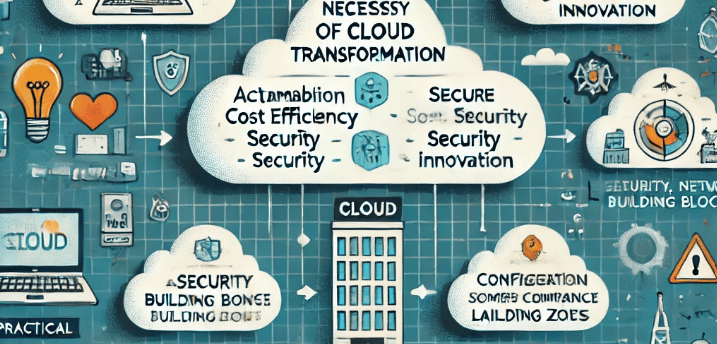Cloud Transformation: A Structured and Secure Approach
Cloud transformation is a crucial step for enterprises aiming to enhance agility, scalability, and cost efficiency. However, a successful transformation requires structured automation, consistent building blocks, and alignment with a well-designed Landing Zone. This article outlines key principles for an effective cloud transformation strategy.
2/2/20251 min read


Cloud transformation is a crucial step for enterprises aiming to enhance agility, scalability, and cost efficiency. However, a successful transformation requires structured automation, consistent building blocks, and alignment with a well-designed Landing Zone. This article outlines key principles for an effective cloud transformation strategy.
The Necessity of Cloud Transformation Organizations are moving to the cloud to:
Improve scalability and agility.
Optimize costs through resource efficiency.
Enhance security and compliance.
Foster innovation by leveraging cloud-native capabilities.
Despite its benefits, cloud adoption can be complex and requires careful planning to ensure consistency, security, and alignment with business objectives.
Automation and Secure Building Blocks A robust cloud transformation strategy is built on automation and standardized building blocks that ensure:
Consistency – Uniform deployment across environments.
Security – Compliance with security policies and best practices.
Scalability – Capability to grow seamlessly without manual intervention.
Automation tools such as Terraform and Ansible play a vital role, but beyond coding infrastructure, it is essential to configure and fine-tune building blocks according to actual business needs.
Building Blocks Aligned with Landing Zone Design A Landing Zone provides a structured foundation for cloud adoption. Building blocks must be designed in accordance with the Landing Zone framework, which varies by organization but maintains some common principles, such as:
Identity Landing Zone – A common concept across clients ensuring secure identity and access management.
Network Landing Zone – Tailored network configurations per customer requirements.
Security and Compliance Landing Zone – Policies and controls customized based on regulatory needs.
Each organization's Landing Zone will differ based on business goals, security needs, and operational preferences.
Practical Approach: Beyond Infrastructure Code Rather than merely writing Terraform or Ansible scripts, a practical approach should include:
Understanding customer requirements before designing the Landing Zone.
Configuring the right building blocks to meet actual needs.
Ensuring automation enforces consistency without overcomplicating deployments.
Maintaining security as a foundational principle across all components.
@CTO Tips
A successful cloud transformation strategy requires more than automation—it necessitates structured building blocks aligned with a tailored Landing Zone design. By balancing automation with business needs and security principles, organizations can achieve a sustainable, efficient, and secure cloud environment.
